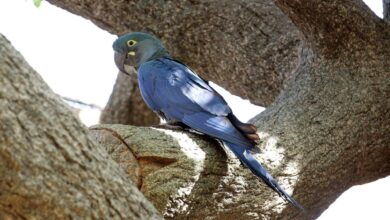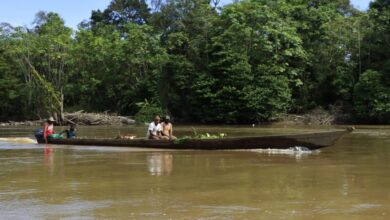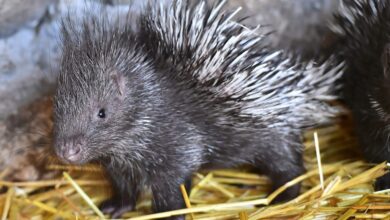How eradicating certain species can protect a forest
Let's imagine we enter a national park, where we are not even allowed to cut a leaf, and discover people with chainsaws cutting down trees.

Eradicating certain species can protect or restore a degraded environment. / Photo: Pexels – Reference image
LatinamericanPost| Jorge Guasp
Listen to this article
Leer en español: ¿Por qué se talan algunos árboles en los parques naturales?
Cutting of foreign trees in Los Alerces National Park
The described situation took place in Los Alerces National Park, many years before it was declared a World Heritage Site by UNESCO. While the visitors stopped at the entrance to pay their ticket, they saw through the windows of the vehicles the cuts that the chainsaws inflicted on the trees. In response to some inquiries, park rangers explained to tourists that the area had been colonized by pines (native to the Northern Hemisphere), and that these had to be removed for native vegetation to re-emerge. Other visitors, on the other hand, did not dare to ask, and left furious, not understanding how it was possible for trees to be felled in a national park.
Tree removal on an island that receives tourists daily
Isla Victoria is located on Lake Nahuel Huapi, within the eponymous National Park, and is one of the tourist destinations most frequented by visitors, as an intermediate step on the excursion to Los Arrayanes National Park, located near Villa La Angostura (in the shore of the lake opposite to that of Bariloche).
“In the North of Andean Patagonia, the introduction of tree conifers began between 1910 and 1940 on Victoria Island, but became relevant from the 1970s with the implantation of forest beds for productive purposes. So far there are approximately between 70,000 and 80,000 hectares of afforestation distributed in Neuquén, Río Negro and Chubut, mainly Ponderosa pine and to a lesser extent Oregon pine and Murrayana pine ”, maintain Mauro Sarasola and Tomás Schlichter, from the National Institute of Agricultural Technology (Bariloche Agricultural Experiment Station), in their work "Invasion of Pines in Patagonia: myth or reality?".
In 2018, the Senate of the Argentine Nation declared of Interest the Project of the Administration of National Parks Ecosystem Restoration of 74 hectares in the southern tip of the Quetrihue Peninsula, Los Arrayanes National Park and 4 hectares in Puerto Pampa – Victoria Island, as a model of intervention to be applied in areas degraded by fire and / or biological invasions in the Nahuel Huapi National Park. In its foundations, the declaration argues that the project is a "model of intervention to apply in areas degraded by fire and / or biological invasions in the Nahuel Huapi National Park" (Draft Declaration S-2138/18). “Its general objective is to fully recover the 1830 hectares of the Quetrihue Peninsula, protecting the species and sites of special values of the Los Arrayanes National Park. In particular, it is aimed at the Quetrihue Peninsula, and Isla Victoria.
Also read: Scientists say it is time to save the Red Sea's coral reef
Several years earlier, in 2003, the Nahuel Huapi National Park had initiated a forest management program on Victoria Island, which not only involves the aforementioned environmental restoration, that is, the planting of native species, but also the management of existing plantations. These planted forests need thinning and pruning; Many trees have naturally collapsed due to the passage of time and the excess of specimens, and this creates risks for visitors.
Ecosystem restoration to restore balance
Eradicating invasive alien species is key to restoring degraded environments. However, communicating the purpose of those tasks is also important. Many visitors do not know for what purpose exotic species were planted, and do not understand how it is possible that the same institution, in this case National Parks, is dedicated to extracting the plants that their own officials established decades ago.
In recent decades, environmental management models have changed. The aesthetic value of nature has given way to a systemic vision, which not only takes into account the landscape but also the functional needs of an ecosystem. And while it is very difficult to restore an environment and bring it back to its original state, any attempt to reverse the damage caused by man represents an important step towards a more balanced world.




